Pachanga, Pantha du Prince, and a Japanese Drone Dance: 10 Reasons We Loved MUTEK.MX 2014
XLR8R goes to a lot of festivals throughout the year, and although we enjoy the […]
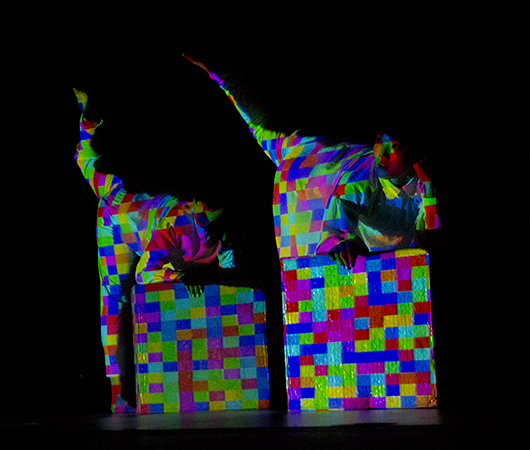
Pachanga, Pantha du Prince, and a Japanese Drone Dance: 10 Reasons We Loved MUTEK.MX 2014
XLR8R goes to a lot of festivals throughout the year, and although we enjoy the […]

XLR8R goes to a lot of festivals throughout the year, and although we enjoy the majority of them, there’s no denying that a select few get us a little more excited than the rest. For instance, MUTEK in Montreal is an event we’ve been attending—and generally loving—for as long as we can remember, but it’s only in the past few years that the festival’s Mexican arm, MUTEK.MX, has invited us to come down and check out its spin on things. The 2013 edition—MUTEK’s 10th year in the Mexican capital—absolutely blew us away, so we arrived in Mexico City last week with some very high expectations. Having done the MUTEK.MX routine a couple of times before, we weren’t going to be bowled over by the sheer novelty of hanging out in Mexico City—although the excitement of the place does hold up incredibly well on return visits—which meant that our final evaluation of the festivities truly hinged on the quality of the music and activities on offer. Much to our delight, MUTEK.MX 2014 delivered, and may have even surpassed last year’s high-water mark. It may not have been flawless, but on the whole, MUTEK.MX remains a very fine festival with what could be described as a particularly strong home-field advantage. Describing everything we saw would be impossible, but we’ve done our best to catalog the things that once again made MUTEK.MX a highly enjoyable experience.
Foto Museo Cuatro Caminos
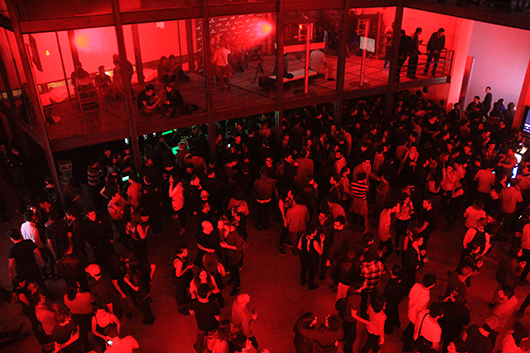
Foro Indie Rocks!
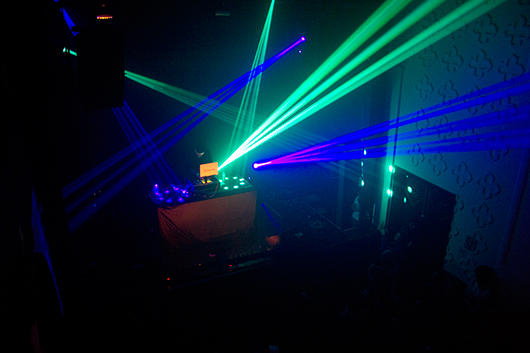
MUTEK.MX is an enormous undertaking.
At this point, music festivals come in all shapes and sizes, but it’s still something of a rarity for an event to extend across an entire week. That fact apparently didn’t faze MUTEK.MX’s organizers, who took’s last year’s extensive 10th-anniversary program and actually expanded upon it. Granted, things started relatively slow, with the festival’s first few days largely focusing on MUTEK_LAB (an umbrella term for all of the week’s lectures, panels, workshops, documentaries, and conference-like activities) at the Centro de Cultura Digital and PLAY, a series of smaller nighttime shows at Foro Indie Rocks! with line-ups largely consisting of emerging Mexican talent. These more intimate activities allowed attendees to ease into the week, and also helped build anticipation for the A/VISIONS series of audio-visual performances (which began on Wednesday and took place at a variety of venues across the city), the festival’s centerpiece events on Friday and Saturday night at the Foto Museo Cuatro Caminos, and the highly anticipated closing performance from Pantha du Prince and the Bell Laboratory on Sunday evening at the Audiotorio Blackberry. As if that wasn’t enough, on Wednesday, a series of nightly, semi-official afterparties featuring some of the festival’s top talent kicked off at M.N. Roy, an upscale private club in the city’s trendy Colonia Roma neighborhood.
Simply put, a lot happened at MUTEK.MX, and the festival’s organizers deserve some major kudos for pulling it all together without any major gaffes. What’s more impressive is that while the festival was happening, we never felt like MUTEK.MX was an overwhelming experience. Even with the multitude of events on offer and more than 50 artists performing throughout the week, seeing just about everything that we wanted to see wasn’t really a problem. Most activities didn’t get going until the late afternoon or early evening, which left plenty of downtime for catching up on sleep and/or enjoying the city, and while the MUTEK.MX team was undoubtedly run a bit ragged in its effort to keep things flowing smoothly, for the average festival attendee, the overall vibe was a relaxed one.
Jon Hopkins
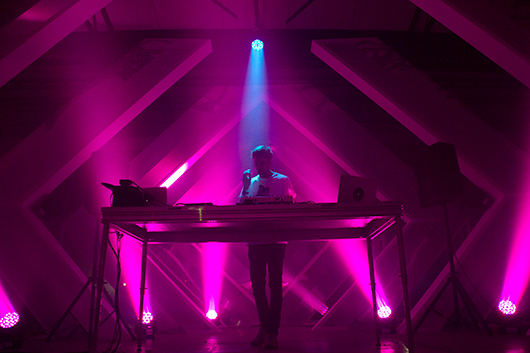
Ben Frost
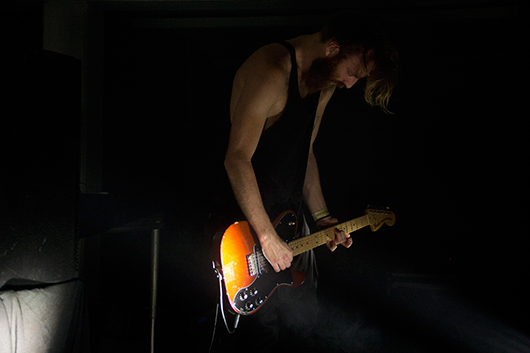
Mexico City is incredible, and MUTEK.MX captures the best of it.
When visiting festivals around the globe, it’s difficult not to be taken in by the charms of whatever locale is hosting the festivities, but Mexico City is the sort of place that would make for an incredible visit even if there wasn’t a festival going on. Admittedly, the city has garnered something of a dodgy reputation over there years—particularly in the United States, there’s a notion that the city is a teeming metropolis that’s fraught with danger, poverty, and substandard living conditions. But while there are elements of truth in these ideas—Mexico City is indeed an incomprehensibly massive place with serious issues surrounding crime and class inequality—it’s nothing like the war zone that some people have imagined. On the contrary, Mexico City is a beautiful—and surprisingly green—place, a city filled with history and a tangible appreciation for art, music, and culture. Someone described it during our stay as a cross between Los Angeles and New York; it’s not a perfect analogy, but there is some sense to it, as Mexico City’s sprawling landscape, warm climate, and horrendous traffic certainly evokes Southern California, while its bustling sidewalks, densely populated environs, and the sense that something is always going on could definitely be compared to New York City. Still, Mexico City —which the locals call DF, short for Distrito Federal—is also a place with its own distinct character, a global capital where world-class museums are as worthy of celebration as the wide variety of street food. (In truth, we could write an entire review delving into all of the amazing things we ate throughout the week, but we’ll spare everyone and simply say that Mexico City has some of the best food on the planet. Eating well is simply another element of daily life in DF, and it helped make our MUTEK.MX experience even better.)
Of course, we’re not the first people to praise Mexico City for its climate, cuisine, and architecture, but one thing that the city rarely gets credit for is its unquestionably forward outlook. When talking about DF’s culture, many people focus on the city’s glorious past, but while Mexico City’s history is well worth celebrating and exploring, it shouldn’t be forgotten that the city is also a modern hub, one which attracts forward-thinking artists, musicians, and culture enthusiasts from around the world. It’s telling that despite its incredibly niche focus, MUTEK.MX has been running for more than a decade, and throughout the week, there was a palatable sense of excitement amongst the crowds. DF has plenty of people who are clued into cutting-edge art and music, but unlike their more jaded counterparts in the US and Europe, they don’t take it for granted, simply because events like MUTEK.MX don’t happen every day in Mexico City—at least not yet. In comparison to MUTEK crowds in Montreal, for instance, the MUTEK.MX audiences were younger and noticeably more enthusiastic, even for the festival’s headiest offerings. Granted, MUTEK.MX’s programming does skew a bit more toward the dancefloor than its more experimental cousin in Montreal, but the overall difference is minimal. Moreover, seeing a group of people that was so visibly amped for a festival where the biggest names involved were artists like Pantha du Prince, Jon Hopkins, Daniel Avery, and Oneohtrix Point Never was truly refreshing.
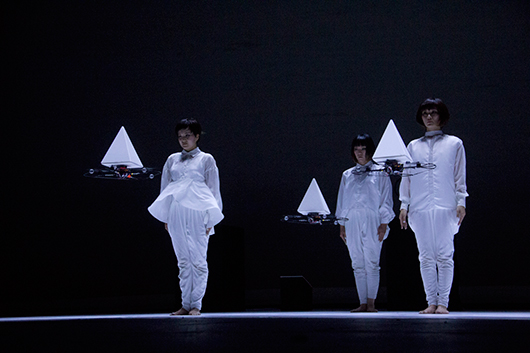
Daito Manabe + Motoi Ishibashi + Satoshi Horii + Satoru Higa + Mikiko
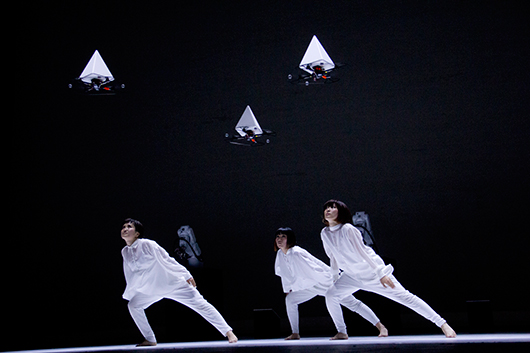
The best performance of the week was delivered by a Japanese ensemble that most attendees had never heard of.
On Thursday night, the A/VISIONS series moved downtown to the historic Teatro de la Ciudad, with Oneohtrix Point Never as the biggest name on the bill. In truth, it was OPN that prompted us to head down there—along with the chance to check out the stunning theater—and though his performance, which featured the visual contributions of regular collaborator Nate Boyce, was entertaining, it ultimately proved to be the least dynamic offering of the night. Before the show, plenty of attendees could be heard grumbling that the MUTEK.MX organizers had scheduled OPN to go on first, but that decision proved to be a wise one, as the show only got better as the night went on. Nonotak played second, and the Japanese/French duo served up an energetic session of glitchy, bass-heavy sounds while performing inside a set of three screens that had been arranged in a triangle around the pair. Throughout the set, the duo projected a series of flashing, kinetic visuals across all three screens, in time with the music, creating a rather lively spectacle.
However, it was the evening’s final performance, from a Japanese ensemble headed up by Daito Manabe, that truly blew everyone away. Before the group, which also included Motoi Ishibashi, Satoshi Horii, Satoru Higa, Mikiko, and five female dancers, most people in the crowd only seemed to know that “some Japanese group” was performing, and that it was “supposed to be good.” As it turned out, that was a huge understatement, as Manabe spearheaded an hour-long show that could perhaps be described as something akin to a live version of classic music videos from Michel Gondry or Chris Cunningham. The dancers were actually the only people on stage, as the other participants remained out of sight, but their contributions were obvious, as the dancers’ tightly choreographed routines were gradually intertwined with an incredible array of technological marvels, including lasers, robots, video mapping, and even a small fleet of drones. The accompanying music, a relatively understated but dramatic soundtrack of electronic sounds, was also quite good, but the pure spectacle of the show—and its seamless marriage of art, music, and technology, in the true spirit of MUTEK—was the truly impressive bit. Claiming that something needs to seen to be truly appreciated is something of a cliché, but this show was absolutely the event of MUTEK.MX 2014, and kept people talking for the rest of the festival. (Side note: it’s well worth scouring YouTube for clips of Manabe’s team in action, as the ensemble has previously performed at a number of festivals around the world.)
Daito Manabe + Motoi Ishibashi + Satoshi Horii + Satoru Higa + Mikiko
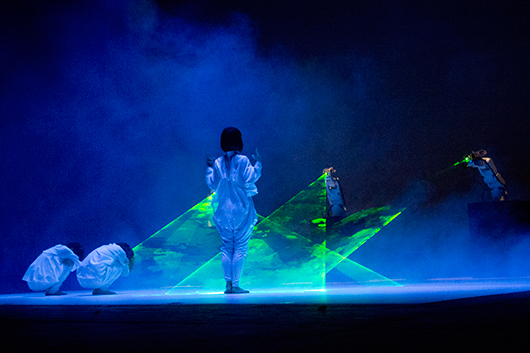
Nonotak
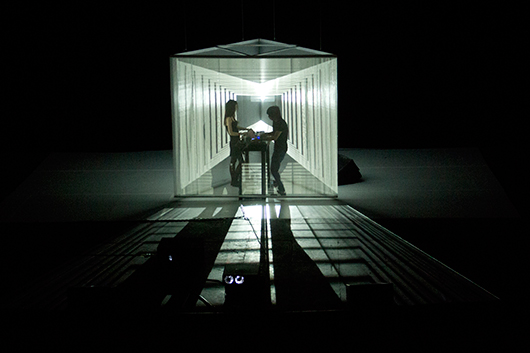
The Foto Museo Cuatro Caminos still needs work—literally—but it was better than last year.
During MUTEK.MX’s 2013 edition, one of the festival’s showcase events took place at the Foto Museo Cuatro Caminos, which sits just outside DF’s city limits. Last year, we described the space as “raw” and “unfinished,” noting that the “massive spot” was “still under construction.” In 2014, the Foto Museo still hasn’t opened to the public, but it’s certainly a lot closer to completion, which is probably why the MUTEK.MX organizers elected to make it the home for both Friday and Saturday night’s festivities. Although the building still needs a bit of work, the unfinished concrete, construction dust, and caution tape of 2013 was absent, meaning that attendees got to hang out in a big, modern venue where multiple rooms had been set up with cool lighting, excellent stage design, and a technologically savvy vibe. Even at its most crowded, getting around the Foto Museo was easy, which helped those looking to quickly bounce between rooms. (This was particularly helpful when someone wanted to catch two artists that were playing simultaneously.)
Still, the Foto Museo did have its drawbacks. Organizers carved out three separate performance areas, none of which was particularly well ventilated. Most of the time, this wasn’t a problem, but during those times when a room became particularly crowded, the temperature would rise to an uncomfortably hot level and the air would become choked with cigarette smoke. On the whole though, this situation was manageable, and there were an abundance of common areas throughout the museum where attendees could chill out and cool down throughout the night. However, there was another issue that consistently rankled people: sound quality. In truth, none of the three rooms sounded great, although it would be fair to say that none of them was an out-and-out disaster, either. (Sala B, which sounded pretty bad last year, was definitely the biggest trouble spot once again, while the smallest of the three rooms, Sala C, was consistently home to the most passable sound.) Granted, subpar sound is something that plagues festivals—and venues in general—around the world, but at an event like MUTEK.MX, which stresses the role of technology and features a number of performances where sound quality is absolutely essential to the music being presented, having an excellent system is particularly important. If the festival continues to use the Foto Museo moving forward, we hope that organizers will make an effort to further improve the situation.
Sound issues aside, the Foto Museo did play host to some of the festival’s most memorable performances. A few of the best ones will be spelled out in greater detail later, but it’s worth noting that Roman Flügel properly kicked the main room into gear on Friday night with a surging set of house and techno. (He actually bested Jon Hopkins and Daniel Avery, both of whom were solid and packed the dancefloor, although neither one was exceptional.) Other standouts on Friday were Jonas Reinhardt, who impressed with his hypnotic, vibe-heavy Ganymeade audio-visual show, and Heatsick, whose playfully lo-fi and oddly tropical sounds provided a lighthearted counterpart to the straighter fare on offer in the main room. Saturday proved to be similarly diverse, with Lawrence serving up a live set of relatively straightforward—if a bit lackluster—house sounds while PAN affiliate M.E.S.H. slammed together abstract grime and snippets of R&B with bass-loaded weirdness and Ben Frost turned in a muscular live set of distortion-laden, yet oddly melodic sounds. Egyptrixx was another one of Saturday’s definite bright spots; despite some early troubles with his visuals, his dark, almost architectural combination of grime and techno resulted in a strongly compelling journey.
Heatsick
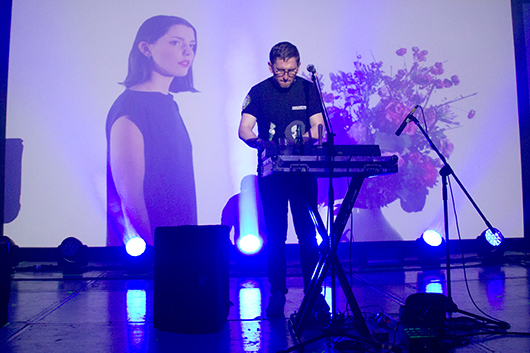
Schem
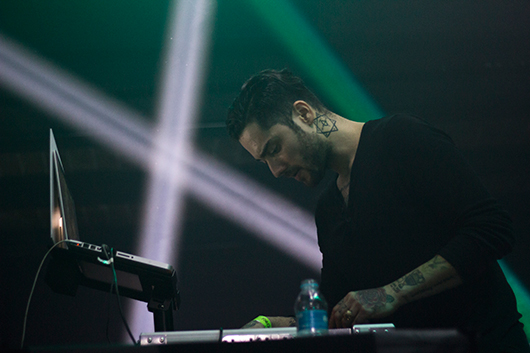
We would have liked to see more Mexican artists, but Schem left a very strong impression.
Programming a festival in a place like Mexico City is no easy task. On the one hand, organizers are expected to put together a line-up with enough star power to entice thousands of people to attend, which usually requires pulling from the same talent pools as the American and European festival circuit. On the other hand, there’s also an expectation that local talent will be represented in some way; these acts may not have the same kind of widespread recognition, but what’s the point of doing a festival in Mexico if no Mexican talent is actually represented? Admittedly, there’s no “right” way to deal with this situation, and MUTEK.MX deserves credit for at least trying to strike some sort of balance between local and foreign talent. At the same time, despite the inclusion of numerous Mexican artists, most of these acts were scheduled earlier in the week for the PLAY series. This meant that many people who attended the festival, especially those who could only make it to the weekend shows, didn’t get to see much in the way of local talent. We’re not faulting MUTEK.MX for this—after all, a weekend line-up overloaded with Mexican acts could have easily been a financial disaster—but it would have been nice to see a few more the country’s artists in the festival’s prime timeslots.
Despite these issues, we still did our best to catch as many Mexican acts as possible, and several of them were impressive. Omaar closed out Tuesday’s night PLAY show with a set of brawny, Berghain-style techno; it was a bit hard for a relatively mellow Tuesday night, but the performance was well executed. Zombies in Miami headlined Wednesday’s PLAY show with an ejoyable set of melodic, Kompakt-style techno, and Siete Catorce made the most of his 11 p.m. slot at the Foto Museo on Saturday by delivering a manic set that swerved through house, techno, and drum & bass. On the same night, the museum’s main room was actually closed out by an extended session of melodic, big-room tech house from Pachanga Boys, a duo consisting of Germany’s Superpitcher and Mexico’s Rebolledo. Of course, we saw other Mexican artists throughout the week—of varying quality—but in the end, the one who truly stuck out was Schem, a producer from Mexicali who performed on Tuesday night and was frequently touted by locals as “the Mexican Andy Stott.” The description isn’t entirely fair, but it’s not exactly inaccurate, either. His music definitely takes cues from both Stott and the Modern Love school of electronic music, but that doesn’t negate the fact that Schem’s hour-long session of dark, atmospheric sounds was intoxicating, and as good as anything else we saw throughout the week.
Jonas Reinhardt
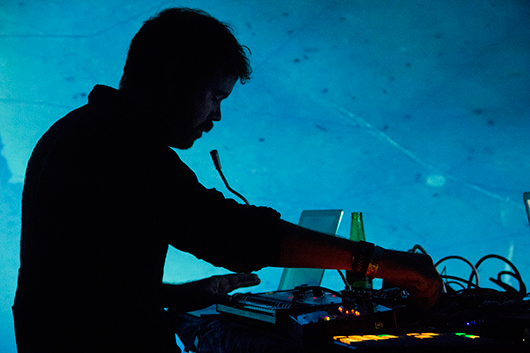
In a festival dominated by live sets, Axel Boman’s DJing was an absolute joy.
MUTEK has always put a premium on live performance, and that preference has trickled down to MUTEK.MX as well, which meant that—aside from the afterparties—only a small portion of the week’s schedule was populated by DJ sets. This wasn’t a bad thing by any means, and MUTEK’s elevation of live electronic music is part of what makes the festival’s many iterations so compelling. At the same time, there’s often a rigidity to night full of live performances, as few artists really have the ability to adjust their live sets to fit a mood, room, or crowd. As such, a well-timed DJ set at MUTEK can occasionally be a real breath of fresh air, particularly when someone as talented as Axel Boman is behind the decks. Taking the Foto Museo’s main stage at 1 a.m. on Saturday night, the Swedish artist quickly charmed the floor with an upbeat array of fun, pop-inflected house cuts. Make no mistake, Boman wasn’t dumbing things down or pandering to the crowd, but with only an hour at his disposal, he wasted no time and went straight to his best weapons. And though the set was well mixed, there was also a looseness to the music that immediately livened up the dancefloor. By the time his set came to a close, smiles were in abundance throughout the room, and even with a live set from Max Cooper on deck, there was a sense that many people would have been happy to keep on dancing to Boman’s selections.
Andy Stott
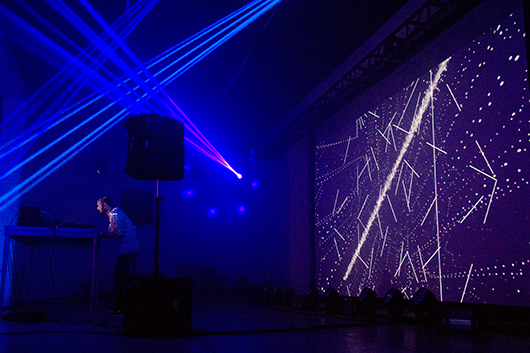
Andy Stott was the festival’s MVP.
At this point, anyone who reads XLR8R with any sort of regularity has likely spotted one of our glowing reviews of Andy Stott‘s live show. Given that, it likely comes as little surprise that we found his performance on Friday night to be one of MUTEK.MX’s highlights. Admittedly, his sonics were a bit limited by the sound quality of the Foto Museo’s Sala B, but his ominous soundscapes and sharp, cutting percussion still proved effective. Perhaps the only surprising thing about his set was how little it dabbled in the sounds of jungle and hardcore, which has been a regular feature of his live performances for quite some time. That being said, festival attendees in search of old-school references were likely delighted by Stott’s performance of Saturday night as one half of Millie & Andrea, his collaborative project with fellow Modern Love stalwart Miles Whittaker. The pair was curiously assigned a 9 p.m. start time, and although Millie & Andrea’s music is anything but suitable for a warm-up slot, the duo was smartly placed in the more intimate confines of Sala C, which featured the Foto Museo’s best sound. Despite the relatively early start, the room was packed, and the dancefloor got moving in a hurry, especially once the booming breakbeats and pitched-up vocal samples kicked in. Without question, Millie & Andrea’s set was one of MUTEK.MX’s most raucous offerings, and its success meant that Stott delivered on two separate occasions. While plenty of acts played a role in the festival’s success, we can’t think of someone who made a bigger contribution than Andy Stott; without him, MUTEK.MX 2014 wouldn’t have been the same.
The Bug
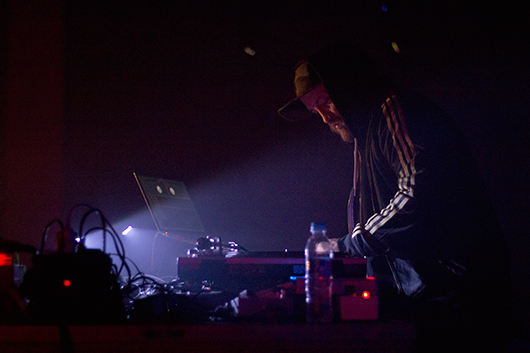
The Bug reminded everyone that dubstep, in the right hands, can be good.
Following the release of his recent Angels & Devils LP, veteran UK producer The Bug has been enjoying something of a rebirth, and the anticipation for his set at MUTEK.MX was high. In comparison with the rest of the line-up, which largely focused on precise and polished sounds, The Bug’s dirty, distortion-heavy bass explorations (and yes, he played a lot of dubstep) were a real change of pace, and the Saturday crowd at the Foto Museo went absolutely wild for him. Drawing heavily from the new album, but also dropping classics like “Poison Dart,” The Bug’s set provided a much-needed injection of raw, gully sounds, and the added presence of London MC Flowdan further ramped up the room’s manic energy. There were times when the Sala B soundsystem did struggle to keep up with The Bug’s skull-rattling creations, but plenty of low-end punch still made its way through the overtaxed speakers; in short, we didn’t see anyone complaining. On the contrary, people in the audience were yelling, jumping up and down, and throwing gun hands in the air, resulting in a sweaty—and undeniably fun—environment that was the closest to a mosh pit that MUTEK.MX came all week.
Objekt
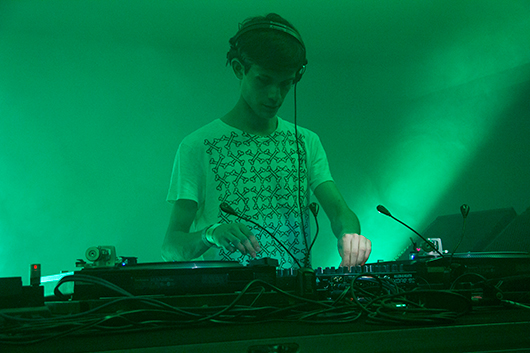
Objekt was gloriously intense.
Long before he took the stage at 3 a.m. on Saturday night, Objekt was thinking about his set. The man is not the kind of artist who doesn’t sweat the details, and after hearing the subpar sound in the Foto Museo’s Sala B on Friday, he smartly requested to be relocated to the smaller—and more appropriately equipped—Sala C. It proved to be a wise move, as the Berlin-based artist unleashed a furious two-hour session of sharp, percussion-heavy techno that was a genuine pleasure to behold. Granted, his DJ style isn’t one in which a sense of “groove” is at the center of the proceedings; in fact, there’s an inherent lack of funk in his selections. Objekt specializes in high-octane machine music, and for the uninitiated—or the unprepared—his DJing can feel like an assault. Nevertheless, at MUTEK.MX, a loyal band of followers showed up for him, fully ready to be taken on a harrowing thrill ride, and even as the clock moved past 5 a.m., there was no letup. Objekt’s set may have been something of an onslaught, but it was also stuffed with some absolutely incredible tunes.
Millie & Andrea
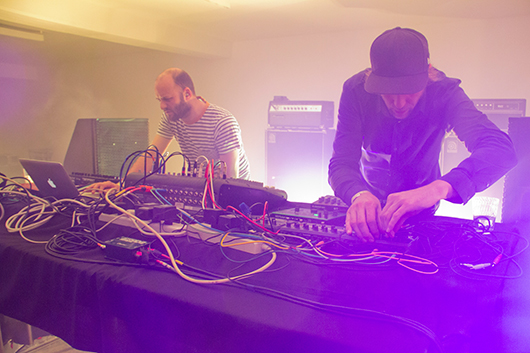
Pantha du Prince and the Bell Laboratory provided the perfect ending to a great week.
Back in May of 2013, we first saw Pantha du Prince and the Bell Laboratory at MUTEK in Montreal, and described the set as “one of the best shows we’ve seen, well, ever.” After seeing the ensemble again at this year’s MUTEK.MX, we were delighted to find out that nothing much had changed. Simply put, the Sunday night show at Auditorio Blackberry was phenomenal, and wrapped up the festivities on the highest of high notes. As it turns out, the show was the very last Bell Laboratory performance, and the group made the most of it, eventually playing an encore, and when even that didn’t satiate the audience, the ensemble agreed to go ahead and play one of its expansive tracks a second time. It was an unusual move, albeit one that was met with rapturous approval by the crowd, which had been brimming with energy from the set’s opening notes. (In fact, just a few minutes into the set, many members of the audience ditched the theater’s assigned seating so they could rush into the aisles and excitedly begin dancing.)
As for the music, little had changed from the last time we saw the Bell Laboratory—each song began with a smoldering sort of round-robin jam (usually involving the six-piece group playing rounds with various bells, xylophones, and gongs) before Pantha du Prince would eventually drop in a proper kick and suddenly transform the composition into a wonderfully melodic piece of techno. Although the recorded versions of these tracks are certainly enjoyable, there’s really no capturing just how much they shine in a live setting, and the MUTEK.MX performance was just so delightfully musical, especially in the context of a week dominated by machines and technology. Pantha du Prince and the Bell Laboratory reminded us that no matter how far technology advances, there is still something human at the core of musical performance, and balancing those two things is a big part of what MUTEK.MX was all about.

